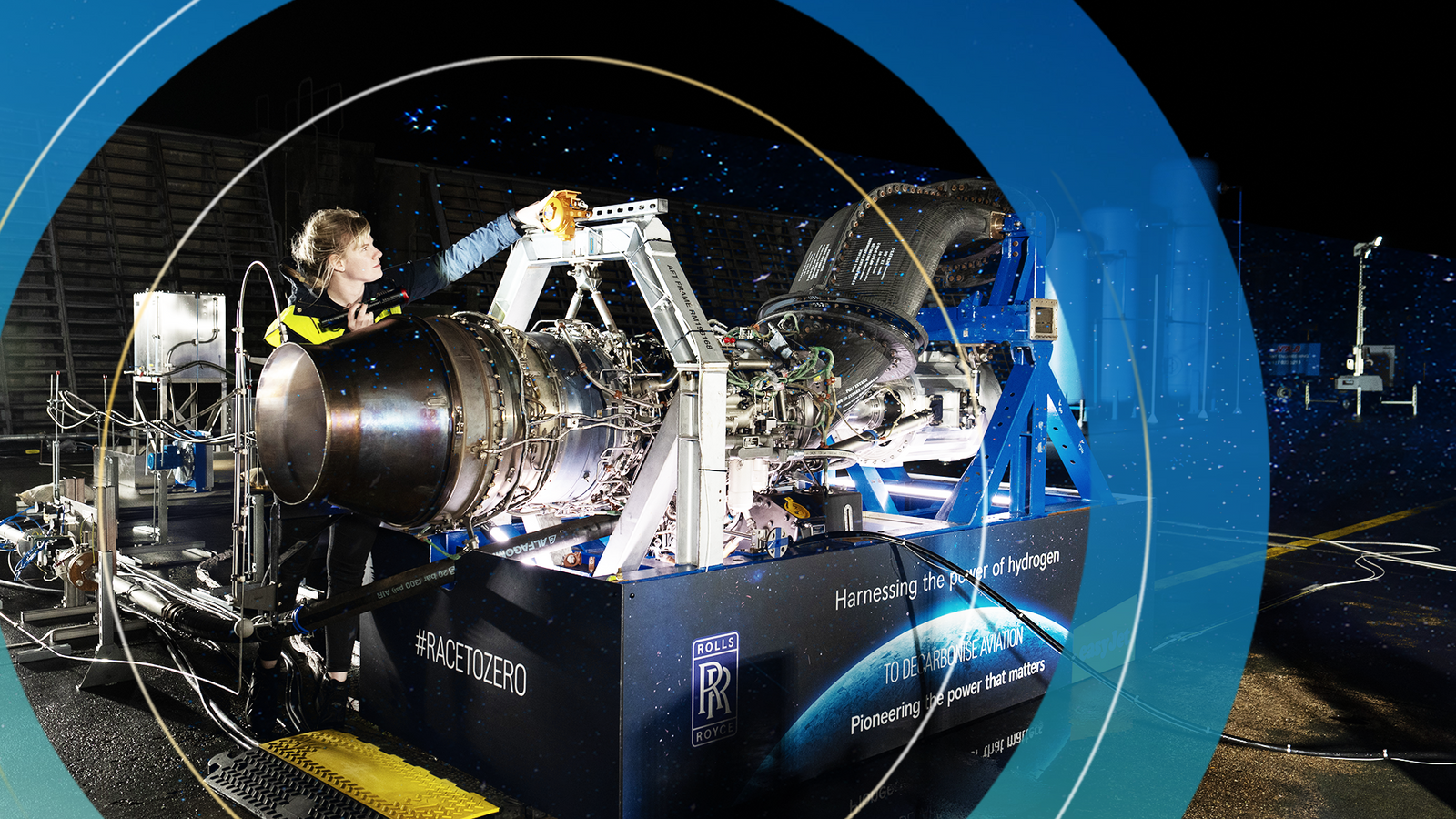An aircraft engine has successfully been powered with hydrogen fuel in what is thought to be a world first, Rolls-Royce has said, in an attempt to reduce the enormous carbon footprint of flying.
The aerospace manufacturer and partner easyJet, the low-cost airline, say the ground test marks a “major step” towards proving that hydrogen could be used as a zero-carbon aviation fuel.
The trial took place at the Ministry of Defence’s Boscombe Down site in Amesbury, Wiltshire, using a converted Rolls-Royce AE 2100-A regional aircraft engine.
Flying dumps climate-heating gases and other pollutants into the air and is recognised as one of the hardest sectors to decarbonise.
A return flight from London to Barcelona releases around 350kg of carbon dioxide per passenger, while the same journey by train would emit around 18kg.
The two companies hope hydrogen can be used in a range of aircraft from the mid-2030s onwards.
EasyJet chief executive Johan Lundgren said the fuel offers “great possibilities for a range of aircraft, including easyJet-sized aircraft”, and could make a “huge step forward in meeting the challenge of net zero by 2050”.
Boeing to pay $200m for misleading investors about plane safety
Cost of living: Ryanair’s Michael O’Leary on the need to burn more oil and coal
Heathrow warns on investment as regulator eyes reduction in passenger charges
Net zero means cutting emissions as much as possible and offsetting or compensating for the rest elsewhere. Scientists agree it is necessary to reach net zero by 2050 to stave off the worst impacts of climate breakdown.
Rolls-Royce chief technology officer Grazia Vittadini said: “We are pushing the boundaries to discover the zero carbon possibilities of hydrogen, which could help reshape the future of flight.”
A switch to hydrogen-powered engines would require a complete redesign of airframes and infrastructure at airports.
The only waste product from using hydrogen as a fuel is water. But green experts warn the hydrogen must be generated sustainably.
While so-called “green” hydrogen is made using renewable power with no emissions, other forms are made from natural gas and emit carbon dioxide in the production process.
The hydrogen in the test engine was produced using tidal and wind energy from the Orkney Islands.
Business secretary Grant Shapps said the UK is “leading the global shift to guilt-free flying”.
But Dr Arnold Gad-Briggs, who sits on the transport panel at the Institution of Engineering and Technology, said we are still “a long way from applying it to a real-life scenario, such as a flying testbed powered by hydrogen engines.”
“But moments like this create the building blocks to realise zero-emissions flying,” he added.
The partnership is planning further work before embarking on a ground test of a Rolls-Royce Pearl 15 engine, which is a model used to power business jets.
Other technologies in the mix to decarbonise flying include electric engines, which might eventually be able to power short flights, and sustainable aviation fuel (SAF).
SAF works in existing engines but is currently only produced in tiny amounts.
Watch the Daily Climate Show at 3.30pm Monday to Friday, and The Climate Show with Tom Heap on Saturday and Sunday at 3.30pm and 7.30pm.
All on Sky News, on the Sky News website and app, on YouTube and Twitter.
The show investigates how global warming is changing our landscape and highlights solutions to the crisis.






















